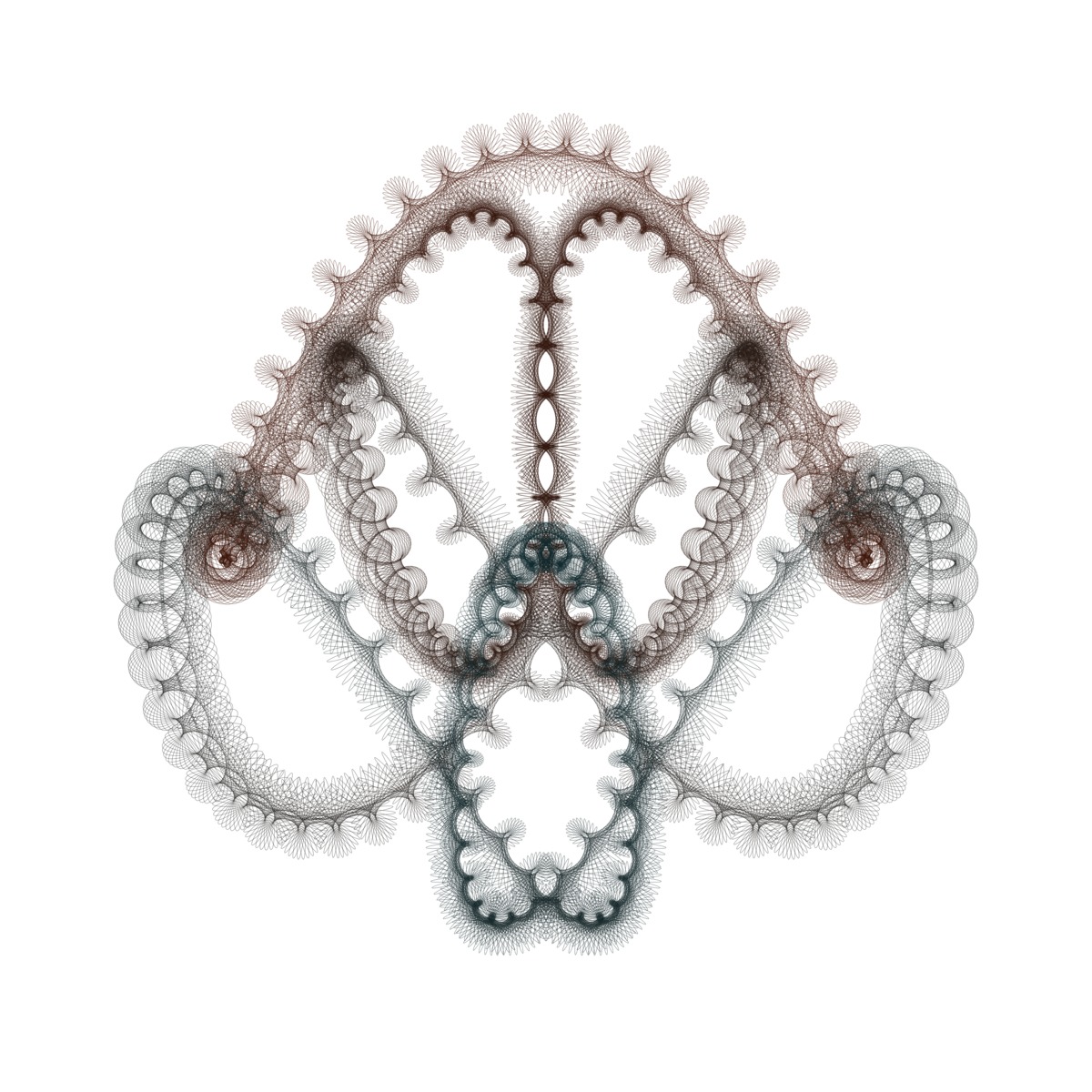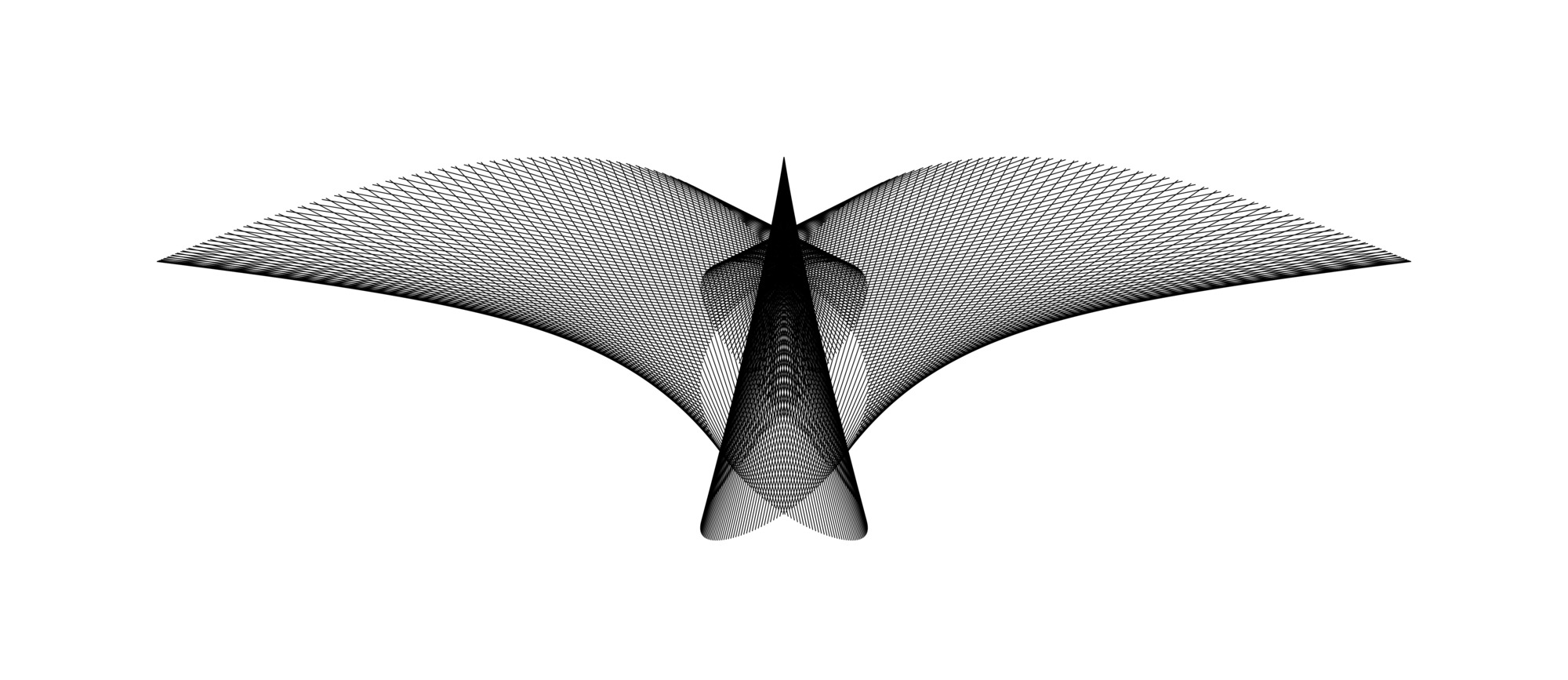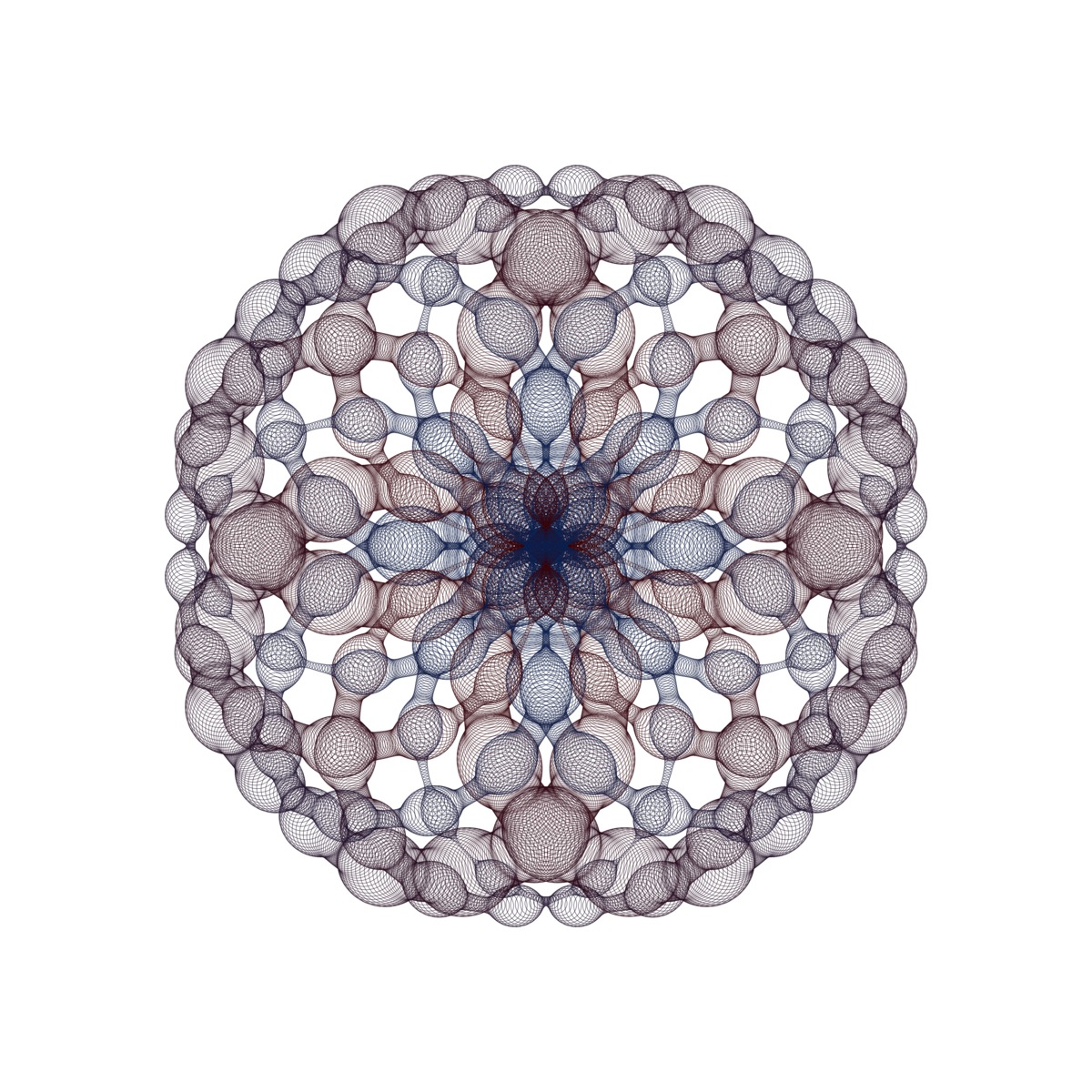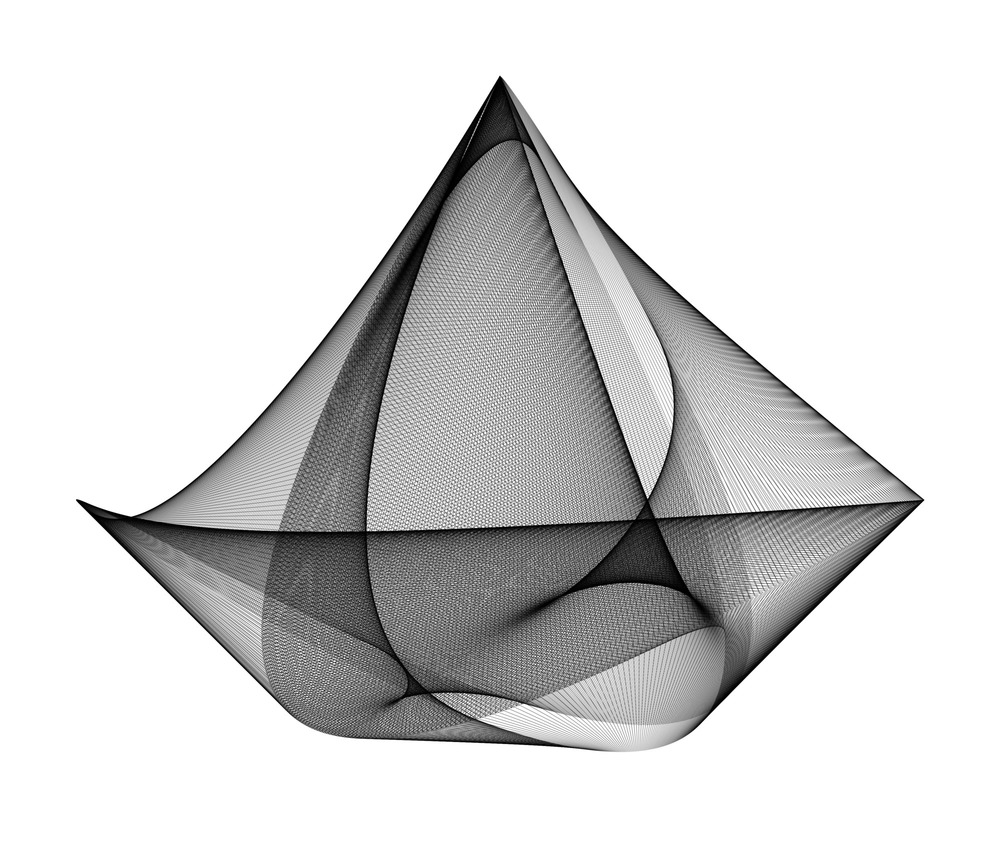Math Is Beautiful
Artist Hamid Naderi Yeganeh can generate thousands of unique, intricate images per day using mathematical formulas programmed into his computer.

If you zoomed in on this picture, you could make out thousands of interconnected ellipses. Mathematical artist Hamid Naderi Yeganeh created them using a series of formulas that he devised and programmed into his computer.
While the illustration might resemble some sort of deep-sea creature, “the main purpose of creating this image was to introduce a beautiful illustration,” Yeganeh writes in an email.

Math formulas have been used for artistic purposes for millennia, according to the American Mathematical Society. With the advent of computers, artists had a new, powerful tool for creating designs whose primary purpose was to intrigue the eye.
“Math has always been used to solve the real-world problems,” says Anne Burns, a retired mathematics professor from Long Island University who became interested in math art in the 1980s. But with math art, “we’re just using it to show some beauty.”

Yeganeh, who’s also a math student at the University of Qom in Iran, became interested in the field of math art a few years ago. He enjoyed using trigonometry to draw symmetrical figures composed of lines and circles, and eventually realized that he could “find some interesting shapes that resemble real things” in the process.
To produce images like you see in this gallery, Yeganeh writes programs that instruct his computer how to implement his formulas (which often entail trigonometric functions, but not always). He can produce thousands of shapes by altering just a few parameters in a single formula. After he runs his programs, he peruses the resulting images and selects the ones he likes the best.

“I change the formulas to find better shapes. But I don’t know anything about the results of the programs before running them. For example, I found [the] boat and animals accidentally,” he writes.
Images that resemble familiar objects or creatures are hard to come by, however. Yeganeh can produce many symmetrical abstract illustrations in one day, while producing the sailboat image, for instance, took almost a month of tweaking formulas.

Yeganeh has been sharing his artwork on his website for three years, and now writes about it on his Huffington Post blog. He likes to make his formulas open to the public because he wants to share “the power of mathematics,” as he puts it.
Yeganeh’s technique is not too difficult for other math artists to attempt, says Burns. “I think anyone with basic programming experience could actually imitate his work,” she says. “It’s very simple, but they’re very beautiful.”
Lauren J. Young was Science Friday’s digital producer. When she’s not shelving books as a library assistant, she’s adding to her impressive Pez dispenser collection.